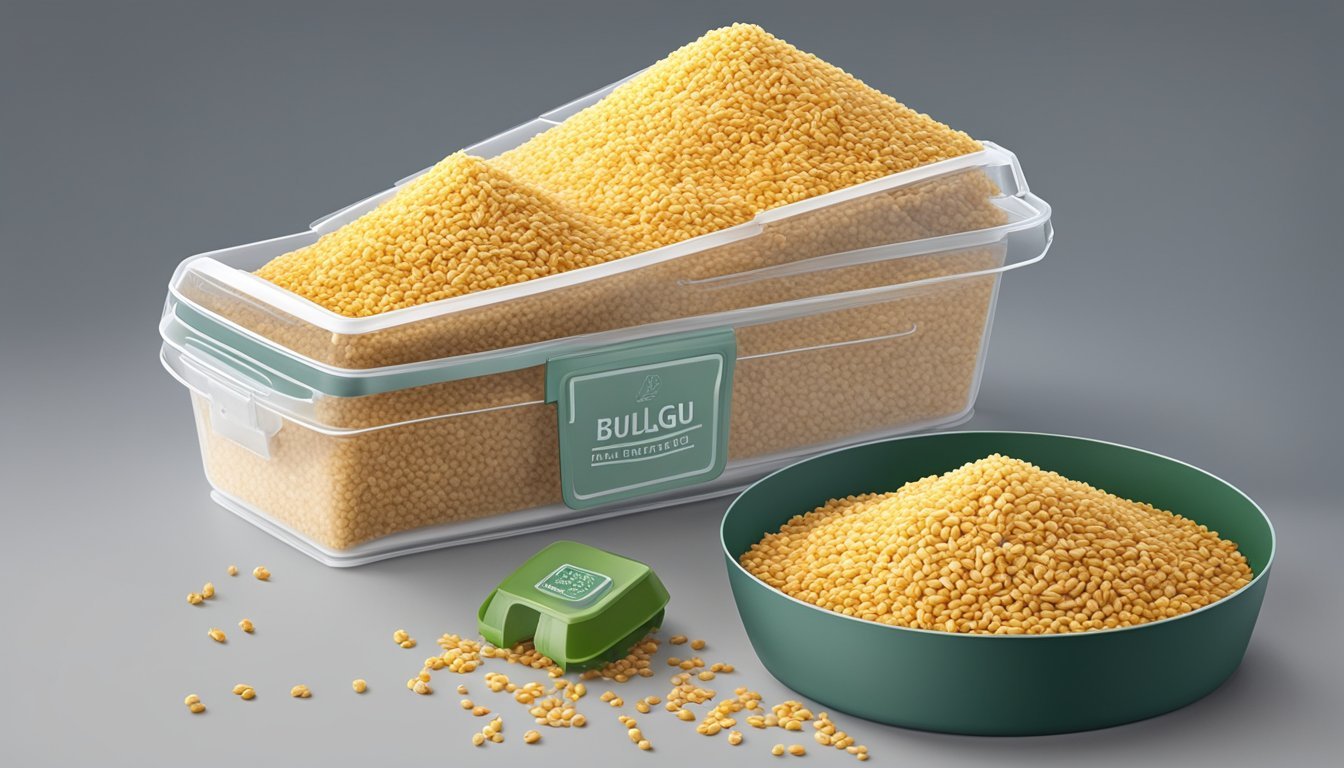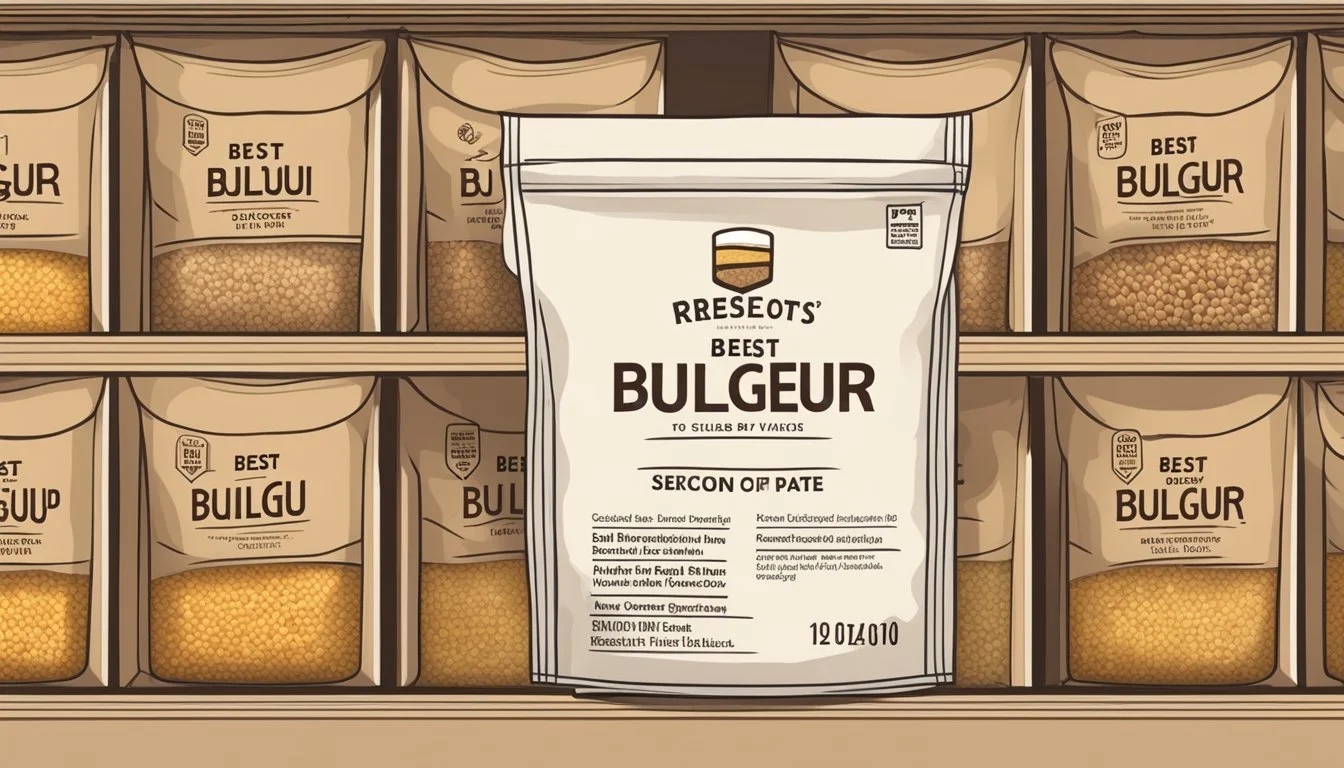How Long Does Bulgur Wheat Last?
Shelf Life and Storage Tips
Bulgur wheat, a whole grain that has been cracked and partially pre-cooked, is lauded for its nutritional content, ease of preparation, and versatility in a variety of cuisines. As a staple in Middle Eastern and Mediterranean dishes, bulgur wheat provides a source of dietary fiber, protein, and various vitamins and minerals. When it comes to shelf life, uncooked bulgur wheat has an impressive tenure in the pantry. Typically, it can be expected to last for 1-2 years if stored properly in an airtight container in a cool, dry place. To maximize quality and flavor, however, it is recommended to use the grain within a year of purchase.
Once cooked, bulgur wheat enters a state where its shelf life decreases significantly. It should be consumed within 3-5 days if kept refrigerated, maintaining its freshness and taste. If one needs to extend the life of cooked bulgur beyond this window, freezing is a viable option. Properly stored in an airtight container or resealable bag, cooked bulgur can last up to six months in the freezer. Such methods of preservation ensure that bulgur wheat remains a convenient and nutritious component of meals well beyond its initial preparation.
Bulgur Wheat Overview
Bulgur wheat is a type of whole grain made from cracked durum wheat. It is particularly noted for its nutty flavor and versatility in various cuisines. This grain provides a significant amount of dietary fiber and protein, essential components for maintaining a balanced diet.
In terms of nutritional value, bulgur is rich in various vitamins and minerals, including iron and magnesium, making it a beneficial addition to meals. It is also low in fat, contributing to its profile as a healthful food choice. A moderate amount of calories in bulgur makes it suitable for those monitoring their calorie intake.
While bulgur wheat is inherently nutritious, those with gluten sensitivities should approach it with caution as it contains gluten. The presence of gluten is due to bulgur being derived from durum wheat, a variety of wheat common in pasta and bread production.
In regards to health benefits, the high fiber content aids in digestion and can contribute to cardiovascular health. Furthermore, the protein in bulgur supports muscle maintenance and repair. This grain is often included in diets that focus on heart health and weight management due to these properties.
Bulgur Wheat Nutritional Profile:
Nutrient Value per 100g Calories 342 Protein 12g Fat 1g Carbohydrates 75.87g Fiber 18g Iron 2.46mg Magnesium 164mg
Bulgur's preparation involves boiling the kernels, which are then dried and cracked. Its preparation is simple and quick, which contributes to its popularity as a staple food in many parts of the world, especially in the Mediterranean region.
Types of Bulgur Wheat
Bulgur wheat comes in a variety of textures and sizes, each suited for different culinary uses. The grain is categorized by its coarseness, impacting both its cooking method and its role in recipes.
Cracked Bulgur
Cracked bulgur is the most rudimentary form of processed bulgur. These grains are minimally processed, merely cracked to reduce cooking time while retaining a hearty texture. It's a versatile option that can be used in a broad range of dishes, from salads to meaty stuffings.
Fine Bulgur
Fine bulgur consists of small grains that have been ground slightly more than the cracked variety. This type possesses a lighter texture and cooks quickly, making it well-suited for delicate dishes like tabbouleh or as a garnish for soups.
Coarse Bulgur
Coarse bulgur is distinguished by its larger grain size and requires a longer cooking time. It provides a robust texture ideal for pilafs, casseroles, and as a substantial base in grain bowls. Coarse bulgur wheat's hearty nature allows it to maintain its integrity in heartier, longer-cooking recipes.
Cooking and Usage
Bulgur wheat is a versatile grain that can be a nutritious substitute for rice or pasta in various recipes. Its nutty flavor and high nutritional value make it an excellent choice for health-conscious cooks.
Preparation Methods
Bulgur is partially cooked whole wheat that is dried and cracked, which reduces its cooking time significantly. It can be prepared easily and quickly, often ready within 12 to 25 minutes depending on the coarseness. To prepare fine bulgur, one simply soaks it in water for about 20 minutes until tender. Coarser bulgur may require simmering in water for longer periods. One should drain any excess liquid and fluff it with a fork before using.
Bulgur in Recipes
Bulgur is traditionally used in Middle Eastern dishes such as tabbouleh and kibbeh. Its ability to absorb flavors makes it an excellent base for pilafs and salads. Additionally, bulgur can be incorporated into soups, providing texture and making them more hearty. Its versatility in the kitchen allows chefs to explore various flavor profiles and cooking techniques.
Substitutes for Bulgur
People may opt for substitutes due to dietary preferences or availability. Quinoa, couscous (What wine goes well with couscous?), and rice are common alternatives that fit well in recipes calling for bulgur. Each of these substitutes comes with its own unique cooking times and flavor profiles. Quinoa, for example, has a slightly more earthy taste and is known for its protein content, whereas couscous offers a lighter texture and takes less time to cook. Rice can be used when a fluffier and softer texture is desired in the dish.
Proper Storage Methods
To maintain the quality and extend the shelf life of bulgur wheat, one should adhere to appropriate storage techniques, which vary depending on the duration of storage needed.
Short-Term Storage
For short-term storage, bulgur wheat should be kept in a cool and dry place, such as a pantry or cupboard. Using an airtight container is essential to protect the bulgur from moisture and pests. Containers with tight-sealing lids are preferred. If the original packaging is unopened and resealable, it may be sufficient; otherwise, transfer the bulgur to a container that can be sealed well.
Long-Term Storage
For long-term preservation, storing bulgur wheat in the freezer is effective. Place the grain in freezer-safe airtight containers or heavy-duty freezer bags to prevent freezer burn and moisture ingress. Labeling the container with the date of storage can help keep track of the shelf life. One can expect uncooked bulgur to last up to two years when stored correctly in a freezer.
Shelf Life Determinants
Bulgur wheat shelf life is influenced by its freshness at the point of purchase and a variety of storage factors. It’s important to monitor these elements to maintain quality and extend its usability.
Bulgur Wheat Freshness
The freshness of bulgur upon purchase is critical. Ideally, bulgur should be bought from suppliers with a high turnover rate to ensure it hasn’t been on the shelf for long periods. The state when bought will affect its longevity - fresh bulgur can last substantially longer than bulgur that sat on a store shelf for an extended time before purchase.
Factors Affecting Shelf Life
Several key factors influence the shelf life of bulgur wheat:
Temperature: Bulgur should be stored in a cool, dry place, away from direct sunlight or heat sources. High temperatures can accelerate spoilage.
Moisture: Moisture is one of bulgur's biggest enemies, as it promotes the growth of mold and bacteria. It should be kept in airtight containers to prevent moisture from shortening its lifespan.
Oxygen: Exposure to air can degrade bulgur's quality. Using vacuum-sealed packaging or containers can minimize oxygen exposure.
Pests: Proper storage includes protecting bulgur from pests, such as insects or rodents, which can contaminate the grains.
Mold and Spoilage: Any signs of mold or unusual odors indicate spoilage, and such bulgur must not be consumed. Regular checks are essential, especially for bulgur stored for extended periods.
Signs of Spoilage
When it comes to assessing the freshness of bulgur, one must be vigilant for signs of spoilage. Identifying these indicators can prevent the consumption of potentially harmful bulgur that has gone bad.
Visual Spoilage Indicators
Firstly, discoloration is a primary visual cue. Bulgur should maintain its natural golden-brown hue. Any signs of white, green, or black spots may indicate the presence of mold and that the bulgur is no longer suitable for consumption. Additionally, if one notices any stringy, cobweb-type formations within the bulgur, this is a sign of pest infestation, which compromises the bulgur's quality.
Olfactory Spoilage Indicators
As for the smell, bulgur that has an off-putting odor is a clear signal of spoilage. Fresh bulgur should have a subtle, nutty aroma. Any sour, musty, or otherwise unpleasant odors signify that the bulgur has likely been compromised by mold or bacterial growth and should not be consumed to avoid any potential health hazards.
Health and Safety Considerations
When considering the health and safety implications of consuming bulgur wheat, it's important to understand its gluten content, nutritional value, and how to prevent contamination.
Gluten Content and Celiac Disease
Bulgur wheat contains gluten, making it unsuitable for individuals with celiac disease or gluten sensitivity. Celiac disease is an autoimmune disorder where the ingestion of gluten leads to damage in the small intestine.
Nutritional Value
Bulgur is high in nutritional value, providing a good source of fiber, protein, and essential nutrients such as:
Vitamins: Particularly folate and vitamin B6.
Minerals: Including iron, magnesium, manganese, copper, and potassium.
This composition supports overall health and may contribute to reduced risk of heart disease.
Preventing Contamination
To prevent contamination and ensure safety, bulgur should be stored in an airtight container to protect it from pests and moisture. Additionally, one should observe proper food handling practices:
Keep raw and cooked bulgur separate.
Utilize clean utensils when handling bulgur.
Regularly check for signs of spoilage, such as unusual odors or the presence of insects.
Frequently Asked Questions
How should one store bulgur to maintain its shelf life?
Bulgur should be stored in an airtight container or a vacuum-sealed bag. It is imperative to keep bulgur in a cool, dry place, protected from direct sunlight and moisture.
What is the typical shelf life of bulgur when stored properly?
In a pantry, bulgur can last up to one year if stored correctly. When kept in a freezer, its shelf life can extend up to two years.
Can bulgur be used after the expiration date on the package?
While bulgur may lose some flavor and texture, it can still be used beyond its printed expiration date provided it has been stored properly and shows no signs of spoilage.
Does bulgur have any nutritional value?
Bulgur is a whole grain and a good source of dietary fiber, protein, and various nutrients, contributing to its nutritional value.
Is bulgur a suitable substitute for other grains in cooking?
Bulgur is versatile in cooking and can serve as a substitute for grains like quinoa, brown rice, or farro, adapting well to various recipes.
Does bulgur contain gluten?
As bulgur is a wheat product, it is not gluten-free and not suitable for those with celiac disease or gluten sensitivity.
Conclusion
The lifespan of bulgur wheat varies depending on whether it is raw or cooked, and the chosen storage conditions.
Uncooked Bulgur:
Pantry: Up to 1 year
Freezer: Up to 2 years
Cooked Bulgur:
Refrigerator: A few days
Freezer (in airtight container or resealable bag): Up to 6 months
The quality of bulgur wheat is maintained through optimal storage. It should be kept in an airtight container, away from moisture and pests, which are critical factors in preserving its freshness. One can also extend its shelf life by refrigerating or freezing, particularly after cooking.
When assessing whether bulgur wheat has passed its prime, individuals should look for changes in texture, color, or scent, and the presence of pests or mold. These indicators suggest that the bulgur should no longer be consumed.
Consumers' adherence to these storage guidelines ensures they enjoy bulgur wheat at its best quality, enhancing their culinary experience while making the most of the grain's nutritional benefits. Proper storage is not only a matter of preserving bulgur wheat but also of food safety and waste reduction.











